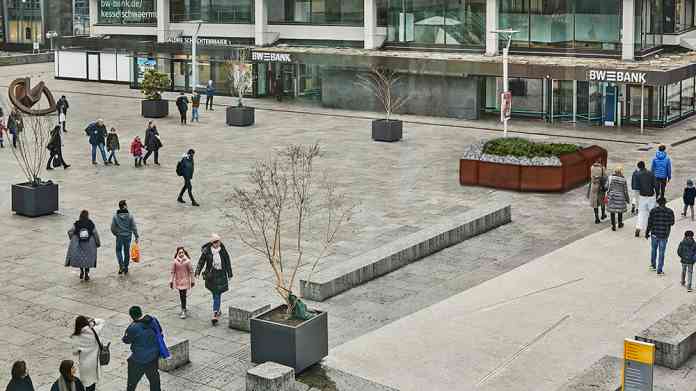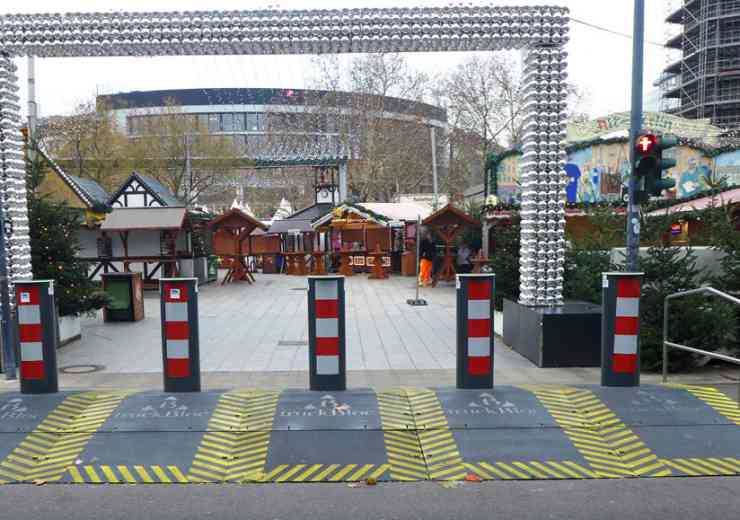
Synergizing future urban design
Christian Schneider, hostile vehicle mitigation advisor, explains how HVM can be integrated into towns and cities and address other problems besides security The competition for coveted residents, visitors and businesses has always been won by those cities that, as innovative pioneers, offer their clientele the highest level of quality of life. Those cities prevail because they are perceived as more innovative, secure, sustainable and healthy than their counterparts. Urban quality of life is inextricably linked to a high level of perceived security, which gives people the sense of well-being they often crave in order to be carefree, creative and productive. As such, even the slightest emotionally perceived inkling of terror and crime is diametrically opposed to this desired state, a situation that underlines the importance of urban security. Hence, this article discusses an important aspect of urban security, the structural protection of urban spaces against the growing threat of hostile vehicle attacks and its intelligent implementation to also overcome a number of further urban challenges simultaneously. How do innovative cities fund their ambitions in the face of scarce resources and ever-growing tasks? Perhaps, just in the same way as successful business enterprises do, through the constant search for innovations and the prudent use of simple, multifunctional and self-supporting systems! However, it would be rather silly to assume that in an increasingly complex world, adding more complexity will lead to more sustainable solutions. Most of the time, the opposite holds true. This applies to all areas of future cities, regardless of whether we are talking about highly complex requirements in the implementation of pedestrianisation or protecting publicly accessible locations against terrorism, extremism and the growing use of vehicles as weapons (VAW) in acts of violence. In all cases, the solution is to look at many municipalities most important challenges in a comprehensive way and then tackle them with most simple and cross-sectoral measures. This not only saves time and money but also ensures the smart (multi)use of valuable resources for installation and maintenance. solutions to city problems Most cities are currently facing an overwhelming number of urgent demands. These include an increased desire for perceived security, urbanisation, climate change and urban warming, particulate pollution management, outdated infrastructures, ageing populations, pedestrianisation, social tensions and a growing number of despicable attacks against police and emergency services. In addition, staff shortages, inflation and falling revenues are not really helpful to cope with these mammoth tasks. It is therefore essential to find sustainable solutions to simultaneously solve as many of the above-mentioned tasks as possible while at the same time requiring as little of the scarce urban resources as possible. HVM A promising way of killing several birds with one stone has recently emerged in the field of Hostile Vehicle Mitigation (HVM). While HVM’s primary task surely is to protect people from extremists who are misusing vehicles as weapons to run people over or harm them through shrapnel dispersion. Still, modern HVM schemes also ought to offer the very opportunity to combine the potential resources of a city, nature and technology in such a smart and cross-sectoral way that solutions to the plethora of demands can in fact benefit from it. Hence, we smartly solve five issues with just one solution. Anyone who nowadays is just thinking of hostile vehicle mitigation in terms of bollards, barriers and steel constructions is kindly advised to get an update from a national Counter Terrorism Security Advisor (CTSA) or an experienced and impartial Hostile Vehicle Mitigation Advisor (HVMA). Modern, innovative Vehicle Security Barriers, so-called VSBs, are now much more efficient than they recently used to be. Whereas in the past, HVMAs had to apply expensive and space-consuming additional measures to compensate for sometimes insufficient retention capacity of standard VSBs (usually Ekin approx. 1,850kJ), the latest barriers are now four times as powerful (Ekin 7,400 kJ), so that they effectively stop all heavy lorries (24t. plus) approaching at full speed within a few metres. Moreover, they now no longer require deep foundations that interfere with subterranean infrastructure to achieve this impressive performance. Ultimately, this is an immense economic and architectural advantage! However, compared to the latest generation of multi-use-planters these new barriers still are just an evolution in terms of performance and foundation, without offering any other additional benefits. A real revolution, in the sense of our initial question of increasing the quality of life in modern cities, however, comes with this new generation of multifunctional, and greenable planters, the so-called “Green Beans”. These are an impressive innovation of high-performance raised beds, that are not only architecturally largely free in terms of shape and dimensions as well as choice of materials and appearance but also offer significantly more benefits than just keeping vehicles out. Urban planners, security authorities, emergency services and security architects may now make use of the multitude of “Green Beans” additional positive technical, climate-protecting, water-storing and, of course, economic capabilities that can be optimally adapted to the respective local needs. The many benefits of these barriers could well be considered a disruptive technology, that now opens up entirely new and creative possibilities for urban planners and security professionals. Cross-sectoral cooperation However, the key to success, as so often, lies in the cross-sectoral cooperation of different offices and authorities, which still goes somewhat beyond the pure consideration of security and urban design. Synergies can be created through comprehensive cooperation, which can even range from the promotion of inner-city biodiversity and spontaneous, virtual unsealing of urban areas to urban climate cooling, the creation of resilient sponge cities, or the relief of the city sewage system during heavy rain falls. But before we now go to deploy this new generation of VSBs, it is particularly important to understand that security is not a product but a process. Hence, security is not resulting from merely placing barriers somewhere but from their proper application. Hostile vehicle mitigation is an instrument of vital security and therefore is regulated by standards and guidelines. Thus, its application is much more demanding than just an installation of simple traffic control measures, e.g. aiming to avoid car park search traffic or the like. More often than not this still is being confused and therefore leading to serious consequences in terms of effectiveness and cost explosion. Hence, the question that rightly arises here is; “how can such a project, which is supposed to simultaneously address so many requirements of future-oriented cities, be planned and implemented properly”? The simple answer is “with foresight and balance”. In this context, “balance” is about constantly keeping the three core principles of security design in mind and bringing them into synergetic harmony with one another. For without balance and synergy, the full potential of an action can neither be fully recognised nor exploited. In the successful handling of security-relevant projects, “foresight” means that at any preparation of a project the three core principles of process, cooperation and proportionality are duly taken into account. Legislation The core principle of “process” focuses on the task of clarifying the project aims, expectations, limitations, budgets, stakeholders, project participants, project structure and process organisation as well as compliance with relevant legislation, standards, and guidelines. In Europe, the relevant standard of Hostile Vehicle Mitigation currently still is ISO IWA 14, which will soon be superseded by its updated version, ISO22343. Just Germany, due to its federal structure and recent extremely negative incidents, got its own HVM-regulations, DIN Spec 91414 guideline, stipulating that any HVM measure must be supervised by an impartial, experienced and trained HVMA or CTSA. The core principle of “cooperation” considers the fact that almost every successful security architecture owes its success to the good cooperation of experts from all affected areas, who were involved in the project from the very beginning in order to jointly find balanced solutions in the sense of project aims and best user experience later on. And so, the third core principle, “proportionality”, is indispensable, because throughout the entire project, the parameters of security level, aesthetics, utility and added value, sustainability and costs shall always be balanced. Securing the urban future increasingly is a question of taking a holistic view on urban tasks and the art of bringing them together; synergistically and economically. Fortunately, nowadays, perceived security and a high quality of life are no longer about dominant “fortress designs” but can once again become central elements of aesthetic urban design, have an inspiring effect and at the same time exert a positive influence on a multitude of other municipal tasks. All that is needed is a commitment to make use of the potential of available innovations and to fully exploit it through cross-sectoral cooperation between municipalities, security professionals and business. Modern HVM therefore is an active contribution to the well-being of people and a liveable, urban future. About the author Christian Schneider founded the INIBSP “Initiative Breitscheidplatz” in 2017 after the terrible Vehicle Ram Attacks of Nice and Berlin, as a non-profit expert forum aiming to quickly provide relevant HVM know-how to decision makers in Germany. Since then, his enterprise has developed into the leading consultancy on the topic in German-speaking countries. Together with international experts and local authorities, he developed and implemented numerous HVM schemes for the protection of entire city centres, airports, critical infrastructures, stadiums and public spaces. Schneider also is member of HVM standards and norms committees, and author of multiple articles on the topic of HVM. His commitment and devotion to protecting people form hostile vehicles earned him the nickname “Poller-Pabst” (Bollard Pope) in Germany.
















